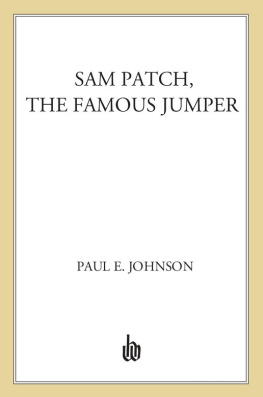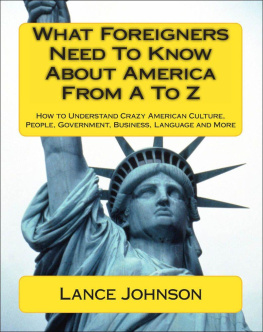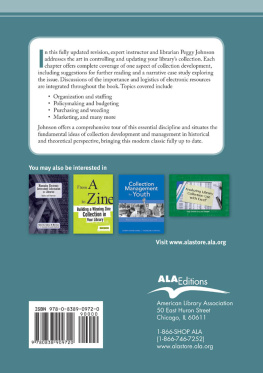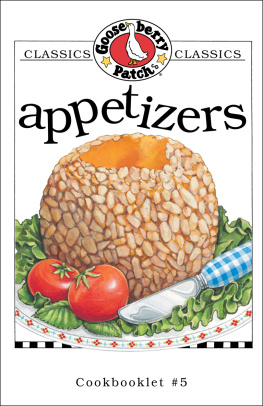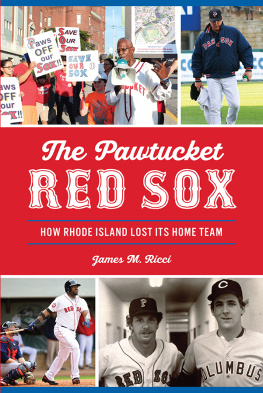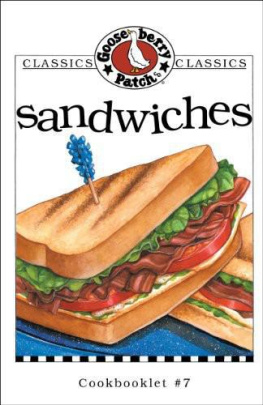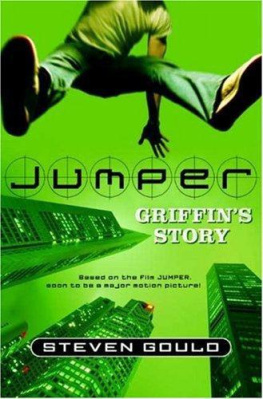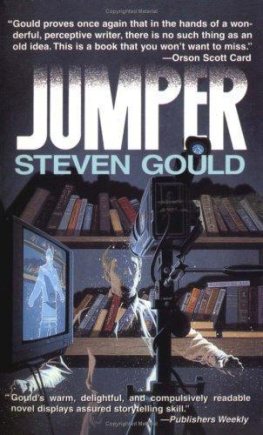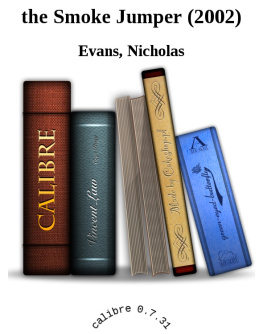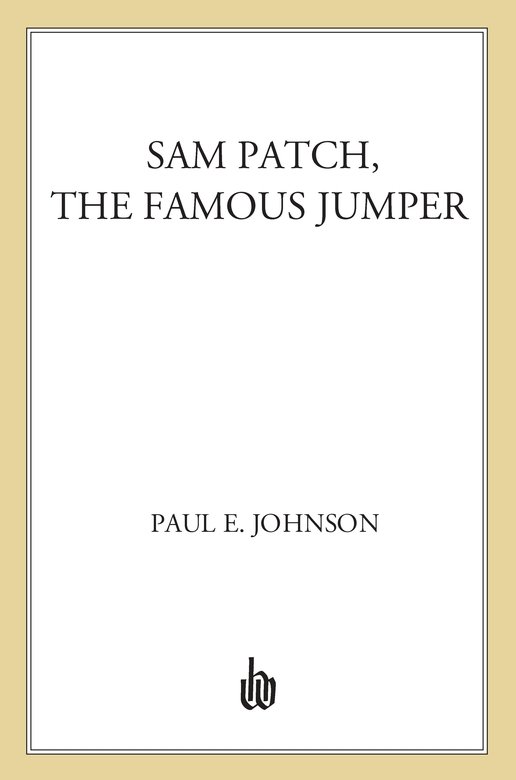I . Pawtucket
The date of the Patch familys arrival in Pawtucket is uncertain. They had lived previously in Marblehead, where their last entry in civil records was in February 1805. Sams mother and sister joined a church in Pawtucket in April 1807. Family memory and subsequent folklore say they came to Pawtucket in 1807.
See in particular Alexander Hamilton, Report on Manufactures, December 5, 1791, in Jacob E. Cooke, ed., The Reports of Alexander Hamilton (New York, 1964), esp. 130-31 (quote, 130); Tenche Coxe, A View of the United States of America, in a Series of Papers, Written at Various Times, Between the Years 1787 and 1794 (New York, 1965; orig. 1794), 14, 55. No Manchesters: George S. White, Memoir of Samuel Slater, the Father of American Manufactures, Connected with a History of the Rise and Progress of the Cotton Manufacture in England and America (New York, 1967; orig. 1836), 135. Such reassurances appear frequently in tracts reprinted in Michael Brewster Folsom and Steven D. Lubar, eds., The Philosophy of Manufactures: Early Debates over Industrialization in the United States (Cambridge, Mass., 1982).
Gary B. Kulik, Factory Discipline in the New Nation: Almy, Brown & Slater and the First Cotton Mill Workers, 1790-1808, Massachusetts Review 28 (Spring 1987), 165-84 (quotes, pp. 172, 173); poor children: Account of a Journal of Josiah Quincy, Proceedings of the Massachusetts Historical Society, 2nd Series, 4 (1888), 124. Baptist:David Benedict, Fifty Years Among the Baptists (Boston, 1860), 312, and Elizabeth J. Johnson and James Lucas Wheaton IV, comps., History of Pawtucket, Rhode Island: Reminiscences & New Series of Reverend David Benedict (Pawtueket, 1986), 121-22. (This is a compilation of the Reverend Benedicts newspaper articles published in 1853-64; cited hereafter as Benedict Reminiscences .) Travel guide: [Theodore Dwight], The Northern Traveller, and Northern Tour (New York, 1830), 314. On the degradation of mill labor and the increasing roughness of Pawtucket, see Gary B. Kulik, The Beginnings of the Industrial Revolution in America: Pawtucket, Rhode Island, 1672-1829 (Ph.D. dissertation, Brown University, 1980), 188-251, 284-85; and Brendan F. Gilbane, A Social History of Samuel Slaters Pawtucket, 1790-1830, (Ph.D. dissertation, Boston University, 1969), 271-83.
Patch gave the name Greenleaf to the census taker in 1790, and his great-granddaughter knew him by that name. U.S. Bureau of the Census, Heads of Families at the First Census of the United States Taken in 1790: Massachusetts (Washington, D.C., 1908), 152.
The declining rural communities of the North Shore and Middlesex County, from which the Patches came, have been well studied by social historians. See especially Philip J. Greven, Jr., Four Generations: Population, Land, and Family in Colonial Andover, Massachusetts (Ithaca, N.Y., 1970); Christopher M. Jedrey, The World of John Cleaveland: Family and Community in Eighteenth-Century New England (New York, 1979); and Daniel Vickers, Farmers & Fishermen: Two Centuries of Work in Essex County, Massachusetts, 1630-1850 (Chapel Hill, N.C., 1994). Also very useful is Toby L. Ditz, Property and Kinship: Inheritance in Early Connecticut, 1750-1820 (Princeton, N.J., 1986).
William Richard Cutter, comp., Genealogical and Personal Memoirs Relating to the Families of Boston and Eastern Massachusetts (New York, 1908), 1:219; Wenham Town Records, 1730-1775 (Wenham, 1940), 1:141, 184; 2:3, 5-6, 8, 20; 3:23, 115, 177; Massachusetts Soldiers and Sailors of the Revolutionary War (Boston, 1903), 11:1000.
Will of Timothy Patch, Administration No. 20744, Essex County Court of Probate, Salem, Mass. Adult brothers shared houses and/or outbuildings with increasing frequency in the late eighteenth century. See Jedrey, The World of John Cleaveland, 73-74, and John J. Waters, Patrimony, Succession, and Social Stability: Guilford, Connecticut, in the Eighteenth Century, Perspectives in American History 10 (1976), 150. A more general discussion of the overlapping obligationsattached to inherited property is provided in Ditz, Property and Kinship, esp. 82-102.
Landholdings computed from the Essex County deeds listed in note 9. Vital Records of Wenham, Mass. To the End of the Year 1849 (Salem, 1904), 65-66, 152, 214.
Court cases: Records of the Essex County Court of Common Pleas (Essex Institute, Salem, Mass.), July 1764 ( Dodge v. Patch ), September 1766 ( Cabot v. Patch, Jones v. Patch, Dodge v. Patch, Brown v. patch ), March 1767 ( Brimblecom v. Patch ). Land transfers: Essex County Registry of Deeds (Essex County Courthouse, Salem, Mass.), Book 123:103; 120:35; 124:64; 116:96; 123:105; 123:44; 121:132; 120:278. Timothys land transfers to his sons are recorded in Books 120:273 and 115:210. Family persistence traced in Vital Records of Wenham.
Essex Court of Common Pleas, July 1770 (Andrews v. Patch ), July 1779 ( Gerilds v. Patch ), July 1782 ( Prince v. Patch, Putnam v. Patch, Wilkins v. Patch, Patch v. Sawyer, Endicott v. Patch ), September 1782 ( Prince v. Patch ), December 1783 ( Upton v. Patch ).
Reading Town Rate Books, 1773-93, Assessors Office, Reading Town Hall. Available at the Family History Library of the Church of Jesus Christ of Latter-day Saints, microfilm reel #0968004. In 1787 Patch paid a poll tax and the tax on a very small amount of personal property.
Marriage: Vital Records of the Town of Reading, Massachusetts, to the Year 1850 (Boston, 1912), 413, 178. Abigail gave birth seven and one-half months after the wedding.
A good recent account of the Battle of Dunbar and its aftermath is Roger Hainsworth, The Swordsmen in Power: War and Politics under the English Republic, 1649-1660 (Phoenix Mill, England, 1997), 80-106.
Cutter, Genealogical and Personal Memoirs, 3:1155; Lilley Eaton, comp., Genealogical History of the Town of Reading, Mass . (Boston, 1874), 96; Will of Joseph McIntire, Middlesex County Court of Probate (Middlesex County Courthouse, Cambridge, Mass.), Administration No. 14496; Inventory of the Estate of Archelaus McIntire, Middlesex Probate 14481; Reading Town Rate Books, 1792.
Daniel Scott Smith and Michael Hindus, Premarital Pregnancy in America, 1640-1971: An Overview and Interpretation, Journal of Interdisciplinary History 5 (Spring 1975), 537-70. McIntire marriages and births are recorded in Vital Records of Reading.
The house and shoemakers shop seem to have been substantial. Therecord of debt (dated September 1789, and carried on into 1790) includes the boarding of workmen (masons as well as carpenters) for nine weeks. Middlesex Probate 14481.
On outwork in New England, see Mary H. Blewett, Men, Women, and Work: Class, Gender, and Protest in the New England Shoe Industry, 1780-1810 (Urbana, Ill., 1990), 3-96; Thomas Dublin, Transforming Womens Work: New England Lives in the Industrial Revolution (Ithaca, N.Y., 1994), 29-75; Alan Dawley, Class and Community: The Industrial Revolution in Lynn (Cambridge, Mass., 1976); Paul G. Faler, Mechanics and Manufacturers in the Early Industrial Revolution: Lynn, Massachusetts, 1780-1860 (Albany, N.Y., 1981); Vickers, Farmers & Fishermen, 309-24; John Philip Hall, The Gentle Craft: A Narrative of Yankee Shoe Makers (Ph.D. dissertation, Columbia University, 1953).

